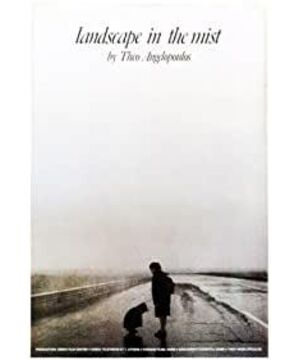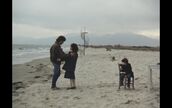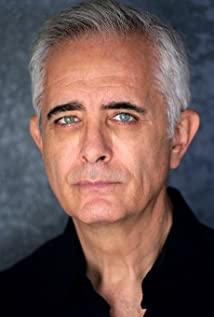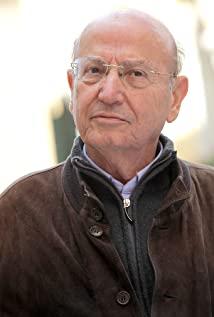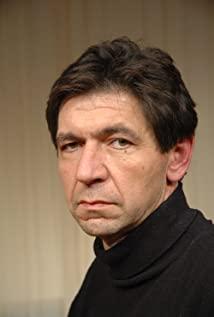From the very beginning, the film is the art of imitation, even if it began to gradually move towards "dream creation" in the hands of Mérieux, trying to provide people with things that are invisible in daily life, but the novelties it creates are also Based on various objects that exist in reality, it is formed by transformation in imitation. At its core, it wants to mimic a predictable real world that might arrive in the future. Whether montages or long takes, most films aim to be a facsimile of reality, providing some information in a slight deviation. This is also why realism can be critical: people recognize the truth of the film, and therefore find a falsehood in their own life.
But there is another type of film, such as Tarkovsky, such as our Angelopoulos, although there are many references to reality in their films, they basically have no intention of imitating reality. "Landscape in the Fog" embodies this very clearly. The story itself is very clear, a 12-year-old girl and her 5-year-old brother are going to cross the border by train to Germany to find their father, even though the first few minutes of the work tells us that the child doesn't fucking know who the father is. The development of this meaningless journey lacks logic and coherence: we don’t know what exactly happened between each long shot, such as why, except for the first time, the sister and brother managed to get on the train without getting caught; we We don't know why they separated from the young drama actors for the first time; we don't know why they went to the border so persistently, even if the girl was raped, they even took the initiative to ask for money from others; how did they solve the problem of food, how did they Switching between the various transport hubs... all of this is omitted. This makes the work have a strong mythological quality (why not a fairy tale, because the purpose of the fairy tale is obvious, so people can ignore the details for this reason, but the myth creates a lot of doubts and does not solve it). On the other hand, the film uses countless long shots to show scenes of a violinist who appears inexplicably, a dead horse, a group of people watching a person catch a chicken, etc. They lack the perspective that the audience can bring into, and can only watch from a distance. The expressions of the little girl and the little boy have basically not changed, and all kinds of emotional plots will be blocked by curtains, hugs, etc. This makes the two also become part of the object, lacking in activity. This makes each shot look more or less absurd on its own. But in a thin plot, these shots are explained: they are the scenery that the sister and brother saw during their trip to Germany, and they are just like this - this time each scene shows what it is. This allows the film to gain independence, and each scene can serve its own purpose by being largely remote from reality. At this time, we can choose the path of metaphor, that is, in a strange sense, many things refer to some truth or reality. Tim Burton's "Big Fish" and Wes Anderson's "The Grand Budapest Hotel" belong to Typical of this type of film.
However, the objects captured by Angelopoulos' lens are indistinguishable from reality. Except for the huge stone statue hanging from the water and the last tree, there is basically no so-called spectacle. Such object selection cancels out the object's depth, and the metaphorical quality that any object—except the final foggy shot—can have. We see that a violinist is a violinist, a horse is a horse, a chicken is a chicken, and they do not imply loneliness, Nietzsche, France, etc. At the same time, these objects show an atmosphere different from reality in the environment. Every scene is realistic, but what happens is deviated, and this deviation cannot be explained, including metaphorical explanations, it even refuses the audience to interpret what happened as horror and supernatural events - the scene is slow and quiet , which is inconsistent with this perception. At this point, these objects lose their symbolic nature and assume their presence itself. There are two effects at this point: we feel the sublime in the long, fixed shots, and there's always something out of the way in those shots - whether it's a cinder truck or something that pops up in a shot I don't know What is a huge machine - and all the audience is allowed to do is to stare at it, at this time, as Kant said, reason is hindered in the face of these unsymbolized things, and then stimulates the vitality of reason itself; secondly, We feel the passage of time in the fast, shaky moving camera positions that clearly follow the camera, and in the close-ups of young people dragging their siblings through the grasslands and the sea, no specific objects are captured in this environment. Prominent, the scenery is consistent, therefore, what the audience feels more is the movement itself, rather than the movement of a single object, because at this time the whole picture is presented as a comfortable whole, in this network each object is still in its place. surrounding. So movement is the - immovable - movement of all things, and temporality manifests at this moment. Thus, the traditional imitation of reality in reality is imitation of conventional reality, where we focus on the various movements and our similarities. But in Landscape in the Fog, the similarities are debunked, and we see how reality itself works. The combination of various things and the time flowing under them are provided as truth, and there is no vulgarity in them, so the film also rejects the audience's substitution - substitution means sinking.
Thus, Angelopoulos makes a transcendent film: nothing in it or perspective is relevant to us, and most objects lack consistent interpretability, so the film is to us as the other . But at the same time, the film doesn't completely reject the audience: road movies have a natural "home" feel, and the thread allows the audience to live with others without having to face them. As mentioned above, we are relieved that this is the scenery seen by the sister and brother, so we can ignore the strange behavior of the troupe actors, the unknown feelings of motorcycle sales, and the huge handicap. When these things appear alone, we can be mind-bending and possibly terrifying. But when the "road" is home, we can only "suddenly" gaze and gain transcendental inspiration. That is, the film connects us to the various perceptions and truths of transcendence, while also protecting us from it. Of course, this is not to say that the film is purely formal, like those works that indulge in direct reference and discussion of the meaning of the film (Greyer, Hong Changxiu), quite the opposite, every shot of the film only needs to focus on the content, Only the content reports revelation, and these revelations also have content, but in my opinion, it varies from person to person. For example, I am very concerned about the two giant silent objects, but some people may pay more attention to the huge sense of decadence. , there is really no specific semantic information I can provide here. In any case, such a film is absolutely diverse, and the only place where repetition can occur is the content of the individual long takes themselves. This is also the only part of "Landscape in the Fog" that makes me feel a little tired: the young actor has too many scenes, and the occasions with him basically show several similar scenes and states, which make people feel stagnant and dispelled. The length of the road movie in content makes the material a little thin.
All in all, such a film, we usually call it a poetic film, pursues content, not the usual form, technique, etc.; but it pursues not just the expression of some specific existing content, but a The search for underlying content, the search for unspeakable, endless content, requires that the film be neither metaphorical nor mimetic, otherwise they quickly acquire what is known, whether it is known by the director. What is known to the audience: most of the metaphors in "Let the Bullets Fly" are intentionally set up by Jiang Wen, and he wants to tell and understand the truth; Korean realist films are more to expose the injustice of reality, or ironically. Expose the hypocrisy of reality, and the audience knows most of the objects, plots and designs in it. But poetic films such as "Landscape in the Fog" have no such fixed content, and Angelopoulos presumably has little certainty about what it is about to express. But through the processing of the scene and the objects in the scene, the work provides an isolated atmosphere, in this atmosphere, it is easier for us to get in touch with the transcendent things, so as to gain a feeling and understanding that we have never had before. Precisely because the goal is this extremely special atmosphere (the poetic atmosphere is obviously different from the obviously entertaining and familiar atmosphere such as horror, high spirits, etc.), the function of the objects, the plot, and all the characters in the scene is to present themselves, for the camera. Movement services, which in turn allow these characters to attach symbolic information at will, which are all erased on first viewing, and then excavated as the work spreads for this poetry and atmosphere. In this way, the work can accommodate both explicit and latent content, while being transcendent and critical.
Of course, I don't think it's necessary to examine the actual innuendo of the work. This is what the audience should do after the first viewing of the movie has gained momentum, and this is not the most exciting part of this movie. With the success of the poetic shaping, all the pretentiousness of the work will disappear. This artistic conception is as strong as the last fog. At that time, the fear in front of the huge object, the pleasure of running on the meadow, and the long wait, as the growing The price - the price of getting there - is accepted. Things that are not in the film appear, and the boundaries that are far away are crossed. This is the process of making this film, the process of watching it, and its content. Finally, we see the original tree-end-life in the fog, all I can do is embrace it and feel it, when the fog clears, the light will fall on those who come here.
View more about Landscape in the Mist reviews


